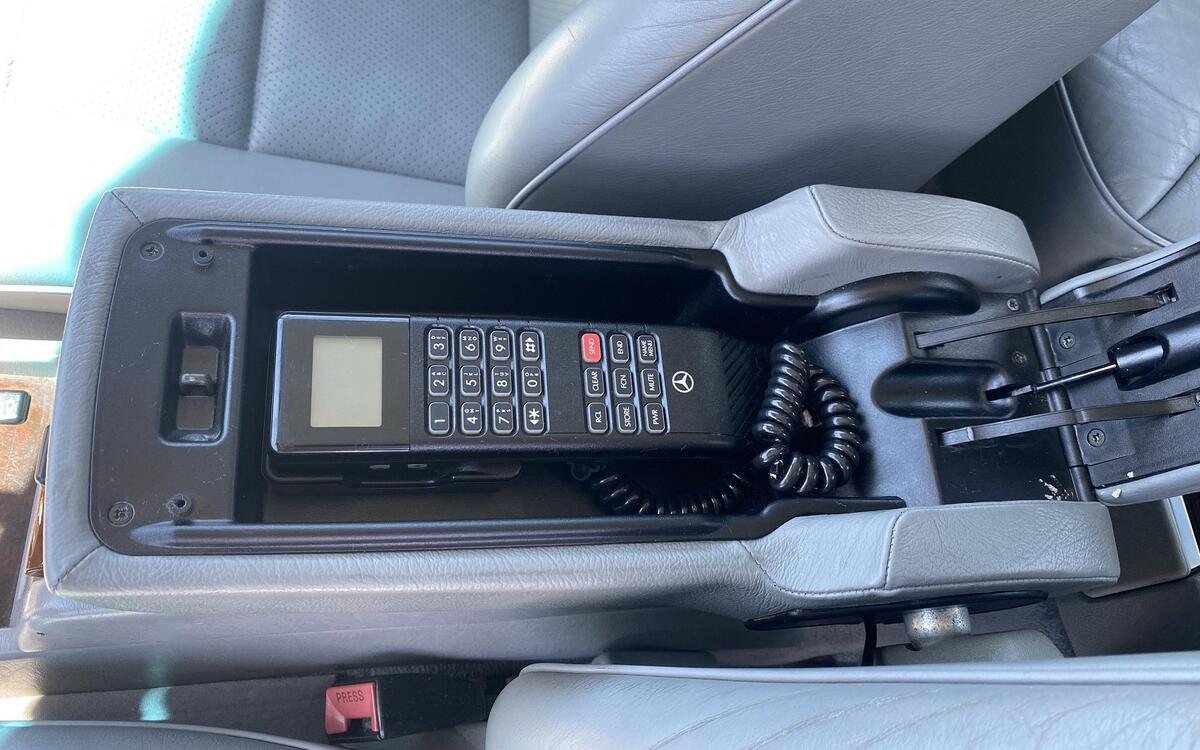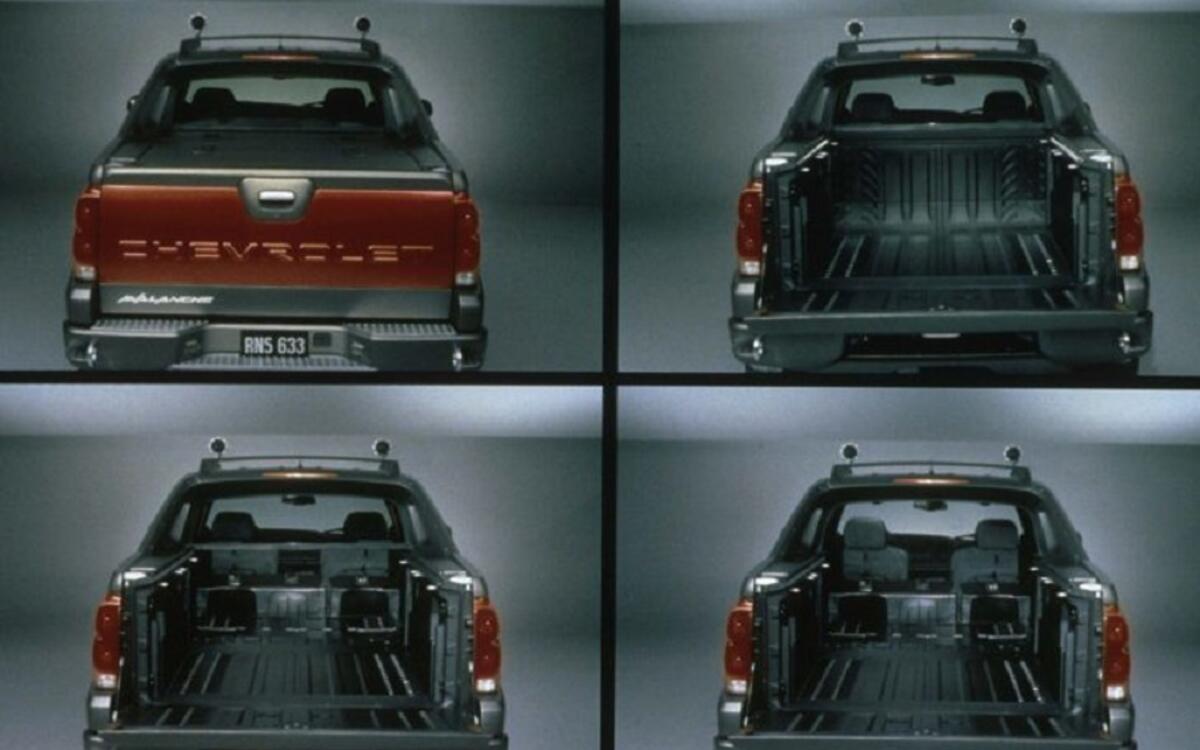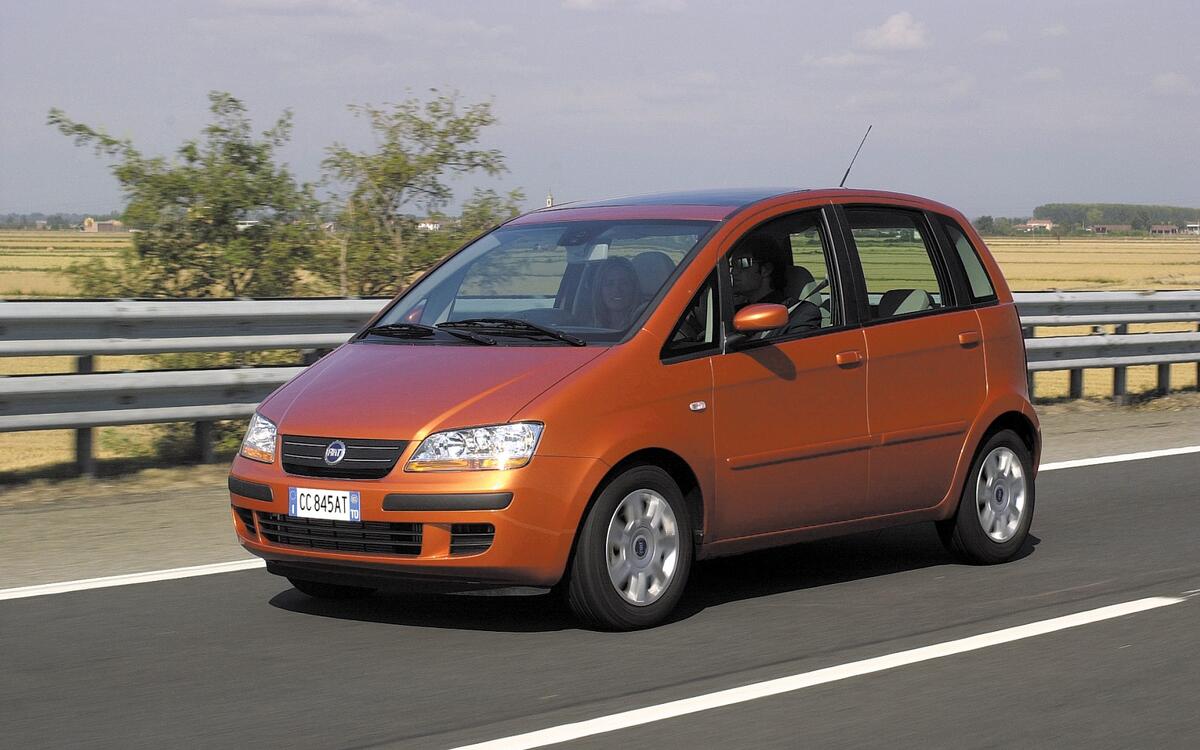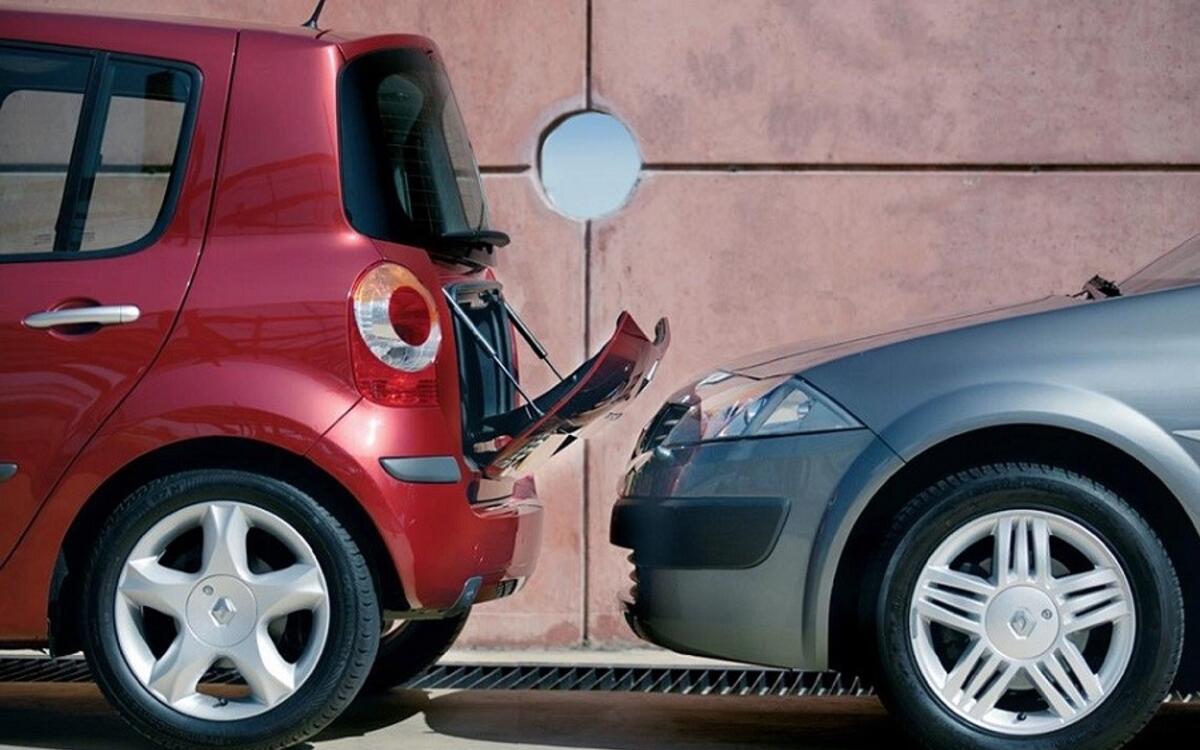 Slide of
Slide of
Motorists tend to be a fickle bunch.
Models, body styles, features and technologies sometimes go out of style as quickly as they rise to prominence and ideas that seemed absolutely brilliant when they were introduced can end up looking dated in a few short years. From a Mercedes-Benz pickup to Toyota’s youth-focused sub-brand, join us for a look at the automotive industry’s flash-in-the-pan moments.
 Slide of
Slide of
Electric cars (1900s)
After the turn of the 20th century, electric cars sold exceptionally well in the United States and abroad because they were smoother and far easier to operate than comparable petrol-powered models. Henry Ford’s wife Clara didn’t drive a Model T; her daily driver was a Detroit-Electric Model 47 (pictured).
Internal combustion technology improved quickly during the 1910s, and advancements like the electric starter made petrol-burning cars far more usable. As fuel prices dropped, so did the market share of battery-powered models. Electric cars consequently faded into the distance during the 1920s and they didn't begin gathering significant attention again until the late 1990s.
 Slide of
Slide of
Turbine-powered cars (1940s to 1960s)
In the 1950s, the whoosh of a turbine-powered car sounded like a promising alternative to the conventional piston engine. An intrepid test driver reached 150mph in the Rover Jet 1 prototype and the lessons learned from the project helped create the turbine-powered racer British Racing Motors entered in the 1963 edition of the 24 Hours of Le Mans. It was an experimental racer, so it wasn’t officially competing, but it would have finished eighth had it entered the race.
Across the Atlantic, Chrysler famously put 50 examples of a gorgeous coupe (pictured) in the hands of real-world customers to evaluate how the technology performed. It ran into many of the same issues Rover experienced but it quietly continued fine-tuning the turbine until the 1970s before throwing in the towel.
 Slide of
Slide of
Transparent roof panels (1950s)
Aerospace design and automotive design collided during the 1950s, which explains why so many American cars launched in that era grew fins. One feature that was far more attractive at an auto show than in the Arizona heat was the transparent, hemisphere-shaped roof panel. This styling cue was reminiscent of a fighter jet’s canopy. It was often added to head-turning concept cars, like the General Motors Firebird I introduced in 1953 (pictured), but putting it on a mass-produced model was easier said than done due partly to concerns related to manufacturing, safety and costs. Designers fell out of lust with the automotive canopy during the 1960s, though Pininfarina has plans to bring it back in the 2020s.
 Slide of
Slide of
Amphicar (1961-1968)
Half boat and half car, the Amphicar promised to give motorists the freedom to go nearly anywhere they pleased. It made waves (pardon the pun) when it was presented in 1961 but motorists, sailors and passengers quickly found out it wasn’t a very good boat or a very good car. Germany-based Quandt built 3,878 units of the Amphicar, which was powered by a Triumph-sourced four-cylinder engine, until 1968. It didn’t spawn a replacement or inspire rivals so it remains the world’s best-known amphibious car.
 Slide of
Slide of
Landau tops (1970s and 1980s)
Also referred to as "simulated convertibles", with fixed roofs covered in fabric or vinyl to resemble a soft-top, Landau roofs were commonly seen on big, stately models like the Ford Thunderbird (pictured) but were also available on more humble vehicles such as the Volkswagen Golf.
First seen on horse-drawn carriages, the landau top lost its function as it morphed into a popular option in the United States during the 1970s. Landau tops fell out of vogue during the 1980s, though some cars offered one through the 1990s. In 2020, there is not a single car offered with a landau top from the factory but there are still shops that install them – and still a small handful of customers that request them.
 Slide of
Slide of
Cadillac’s cylinder deactivation technology (1981)
Shaken by the 1973 and 1979 oil crises, Cadillac began looking for a way to build more efficient cars without having to downsize or ask its customers to compromise on power. Cylinder deactivation technology capable of transforming a V8 into a V6 or a frugal V4 was deemed the perfect answer and the appropriately-named V8-6-4 engine made its debut for the 1981 model year. It was offered on several models, including the Fleetwood Brougham (pictured as a coupe).
It took only a few weeks for the first complaints to come in. Customers criticised the engine’s lack of smoothness in any configuration and the amount of time it took for the sleeping cylinders to wake up. Cadillac released no less than 13 programming updates in a bid to fix the problems but it ultimately stopped offering the V8-6-4 engine in its regular-production cars for the 1982 model year.
 Slide of
Slide of
Car phones (1980s and 1990s)
Although car phones were invented in the 1940s, they didn’t become a relatively common sight until the 1980s, when they were normally installed in upmarket cars driven by wealthy motorists. Chatting while driving was the zenith of futurism until cell phones began merging into the mainstream during the early 1990s. In hindsight, the car phone spent only a few years in the automotive spotlight.
 Slide of
Slide of
BMW V16 engine (1987)
BMW set the bar high when it began developing a 6.7-litre V16 engine in 1987. It hoped the engine would power a flagship saloon positioned above the 7 Series; it could have arrived either as a standalone model (a 9 Series of sorts) or as a super 7. Development work advanced at a relatively quick pace and engineers tested the V16, which made about 408bhp and 461lb ft of torque, in a heavily-modified E32-generation 7. Making the big engine fit required relocating the radiator to the boot and adding air scoops to the quarter panels, which earned the prototype (pictured) the nickname Goldfish.
Executives cancelled the engine after concluding the V12 available in the 750i was big enough. Every 7 launched since has offered a V12 but BMW has never brought a 16-cylinder to production and its electrification efforts all but confirm it never will. Even the 12 is living on borrowed time.
 Slide of
Slide of
Automatic seatbelts in the United States (1980s and 1990s)
Oddly, automatic seatbelts were largely created as a way to avoid putting airbags in cars. American regulators mandated that all new cars needed to be equipped with a driver-side airbag or automatic seatbelts by the 1990 model year and the latter solution was much cheaper than the former. Automatic seatbelts disappeared from the American market after driver-side airbags became mandatory for 1995.
 Slide of
Slide of
Hummer (1999 to 2010)
AM General released the civilian version of the Humvee in 1992 but Hummer didn’t become a standalone brand until General Motors purchased the rights to it in 1999. It quickly expanded the line-up with smaller models named H2 and H3, respectively, but an increasingly unpalatable image and the company’s bankruptcy landed the Hummer brand on the chopping block. General Motors closed Hummer in 2010, about a decade after it was founded, though it’s preparing to resurrect the name on an electric off-roader sold under the GMC brand and due out in 2021.
 Slide of
Slide of
Chevrolet’s Midgate (2001)
On paper, the Midgate fitted to the Chevrolet Avalanche introduced for the 2002 model year was a brilliant piece of engineering. It allowed users to fold down the partition between the truck’s passenger compartment and its cargo box, creating one of America’s most spacious vehicles. This feature was also fitted to Cadillac’s variant of the Avalanche, the Escalade EXT, and adapted for the short-lived GMC Envoy XUV.
Many assumed Chevrolet rivals Ford and Dodge would offer their own version of the Midgate, or that it would be available on the Silverado after Avalanche production ended in 2013, but it ended up consigned to the automotive attic. In hindsight, demand for this costly feature was lower than expected.
 Slide of
Slide of
Lincoln’s pickups (2001)
In hindsight, Lincoln’s logic was sound. If motorists loved the Navigator, its first SUV, they’d surely fall head over heels for a pickup. Starting with the Ford F-150, the company added a Navigator-like front end and fake wood panelling on the outside of the cargo box that earned the truck the name Blackwood (pictured).
It was only offered with rear-wheel drive and a carpeted cargo compartment so its usability was limited and sales were consequently low. In the United States, it was only offered during the 2002 model year. Mexican buyers gave it a warmer reception so it lasted until the 2003 model year.
And yet, Lincoln didn’t give up. It boldly marched back into the pickup segment for the 2005 model year when it introduced the Mark LT, which was also a re-badged F-150 but more practical than the Blackwood. Sales ended in 2008, though the Mexican market received a second-generation model, and Lincoln stopped trying to sell trucks. Cadillac came to the same conclusion after the 2013 model year.
 Slide of
Slide of
Individual LEDs (2000s)
LED lightning spread across the automotive industry like a wildfire during the 2000s. Carmakers such as Audi and Lexus brought the feature to the masses and it didn’t take long for strips of individual LEDs to appear on models made by more mainstream companies, like Volkswagen and Nissan. It's shown here on a second-generation Qashqai. These little dots gave a car a modern, upscale look -- for a while, at least. LED technology evolved quickly and by the second half of the 2010s continuous strips were the norm and individual LEDs looked rather dated.
 Slide of
Slide of
MPVs (2000s)
Multi-purpose vehicles (MPVs) were all the rage on the European market during the 2000s. Smaller than a minivan but taller than a standard hatchback, cars like the Fiat Idea (2003; pictured), the Opel Meriva (2003), and the Renault Modus (2004) were marketed as the ideal vehicles for commuters and vacationers alike. Their appeal was ephemeral and most were replaced (either directly or indirectly) by crossovers. In 2020, the MPV’s last bastion in Europe is the Ford B-Max, which features a pair of sliding doors. Volkswagen hasn't indicated whether it will replace its entry into the segment, the Golf Plus, or if it will direct buyers towards one of its SUVs.
 Slide of
Slide of
Scion (2003)
Toyota created the Scion brand in 2003 because its hard-earned reputation for building dependable, predictable cars didn’t resonate with younger buyers in the United States. Scion’s cars were anything but boring, at least from a design standpoint. Its line-up included a shockingly affordable coupe named tC and a toaster-shaped hatchback called xB (pictured) that spawned several imitators. Scion was off to a strong start but it veered off-script during the 2010s. Market research showed young motorists who took home a Scion often didn’t buy a Toyota or a Lexus when they got older. Worse, its average buyer age rose from 35 in 2004 to 43 in 2011 as economic factors led older drivers to seek cheap, no-nonsense cars and the younger buyers Scion hoped to lure into its showrooms to shop used.
Toyota ended the Scion experiment after the 2016 model year. Some of its cars were folded into the Toyota range, like the FR-S and the iA, while others retired.
 Slide of
Slide of
Renault’s boot chute (2004)
Renault celebrated the Modus as a versatile car capable of carrying a family and their bags in a city-friendly package. One of the model’s most-hyped features was a boot chute, which was essentially a bottom-hinged boot lid not unlike the original Mini’s integrated into the hatch. Users could open it by up to 52 degrees to retrieve what little gear they managed to fit in the boot, even if they were parked in a tight space.
It was standard on upscale variants of the Modus, like the Initiale, and optional on some of the other trim levels. Ultimately, not enough motorists ordered the boot chute to justify adding it to the updated Modus introduced in 2008, let alone making it available on other Renault models (such as the Scenic). Rivals watching from the side-lines quickly decided not to experiment with their own boot chutes.
 Slide of
Slide of
Peugeot 1007 (2005)
“Build it and they’ll come,” Peugeot must have assumed when it launched the 1007 in 2005. Related to the 206 under the sheet metal, it stood out from all of its rivals with a pair of power-operated sliding doors that gave motorists unobstructed access to the passenger compartment even if they were parked in a tight spot. Users quickly complained that the doors took too long to open and that they made accessing the rear seats difficult. Sales were consequently lower than expected and the 1007 retired in 2009 without a successor.
 Slide of
Slide of
Modern-day diesels in America (2010s)
America’s love affair with the diesel engine is convoluted and, as of 2020, mostly over. Diesels largely faded from the nation's collective memory during the 1990s but they stood in the spotlight yet again in the early 2010s because their low fuel consumption made them appealing to cost-conscious motorists. Volkswagen was the nation’s best-known purveyor of turbodiesel engines, leading rivals like Chevrolet, Hyundai and Mazda to invest in the technology. The segment collapsed after the widely-publicized Dieselgate scandal erupted in 2015.
Hyundai cancelled plans to offer a diesel in the Santa Fe and Chevrolet (which openly sought to conquer former Volkswagen owners) discontinued the diesel-powered Equinox for 2020. Mazda brought its 2.2-litre SkyActiv-D but it shot itself in the foot by only offering it on an expensive variant of the CX-5. Moving up in the industry, Mercedes-Benz and BMW left the diesel segment in the 2010s, too.
 Slide of
Slide of
Aston Martin Cygnet (2011)
In 2011, the Aston Martin line-up ranged from the One-77, a limited-edition coupe with 750bhp, to the Cygnet, a 97bhp city car based on the Toyota iQ (sold as a Scion in America). Aston Martin did little to hide the fact that it re-badged Toyota’s answer to the Smart to comply with strict CO2 emissions regulations in the European Union. It nonetheless hoped to sell 4000 units of the Cygnet annually.
Production ended in 2013 after approximately 300 examples found a home. Aston Martin entered the 2020s with big plans to enter new segments thanks to cars like the DBX, its first SUV, and the upcoming Valhalla, a mid-engined model, but don’t expect it to launch another city car anytime soon.
 Slide of
Slide of
Mercedes-Benz X-Class (2017)
Mercedes-Benz learned the same lesson as Lincoln after it tried selling the X-Class, a re-badged Nissan Navara, for approximately three years. About 16,700 units of the truck were sold globally in 2018 and around 10,000 Xs found a home during the first nine months of 2019, numbers that fell well short of expectations. Production ended in 2020 and, as of writing, it doesn’t sound like Mercedes-Benz will release another pickup to replace it.
 Slide of
Slide of
Cadillac Blackwing engine (2019)
Who killed the Blackwing? No one at General Motors is willing to point a finger but what’s seemingly certain is that this masterpiece of an engine won’t power another Cadillac. The twin-turbocharged, 4.2-litre V8 was developed from scratch and inaugurated by the short-lived CT6-V (pictured), where it delivered 542bhp. Rumours claimed it would power other cars, including a high-performance version of the new-for-2020 Escalade and the CTS-V’s hotly-anticipated successor, but they weren’t accurate. Cadillac clarified the engine doesn’t fit in either car.
We also heard a variant of the Blackwing would end up in the eighth-generation Chevrolet Corvette but that’s not happening, either. Hagerty learned General Motors could sell the engine to a boutique carmaker named Manifattura Automobili Torino, though the deal hasn’t been finalised yet.
Buyers decided they didn't need a boot chute or a Mercedes-Benz truck
Advertisement














































